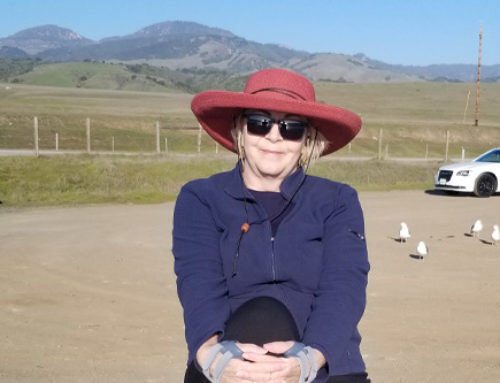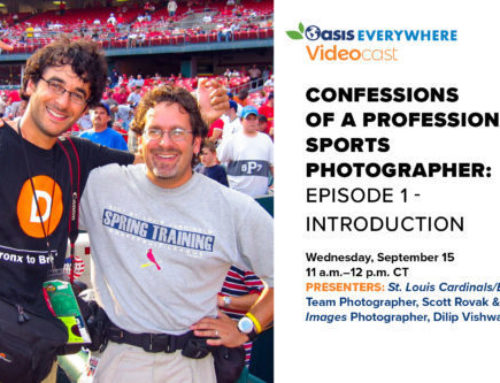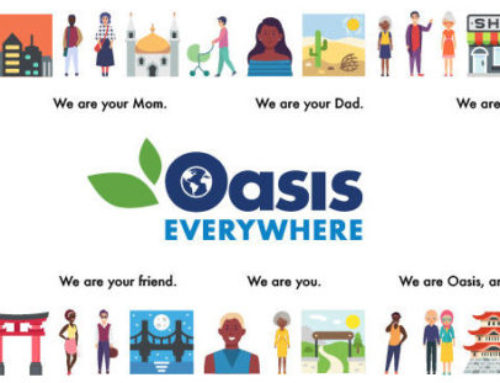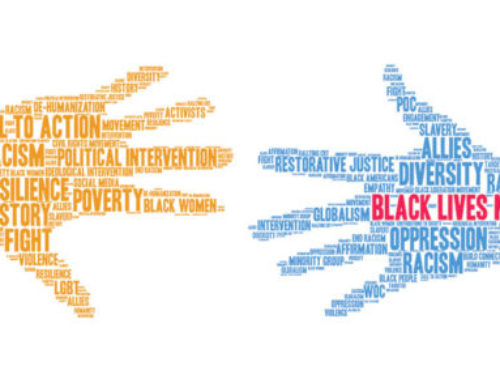What’s it Like to Retire?
Retired Oasis Communications Director, Janice Branham interviews former colleagues about life in retirement after fulfilling careers at Oasis.
By Janice Branham
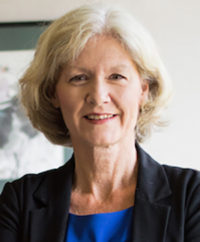 Being a part of Oasis for more than two decades had a way of nurturing high hopes for retirement. The day-to-day challenges of supporting a national organization and fielding the crisis du jour provided an extended exercise in lifelong learning, an experience I’m sure many of my colleagues have shared.
Being a part of Oasis for more than two decades had a way of nurturing high hopes for retirement. The day-to-day challenges of supporting a national organization and fielding the crisis du jour provided an extended exercise in lifelong learning, an experience I’m sure many of my colleagues have shared.
The best part of my job was the time I spent lifting up the stories of older adults living vibrant, healthy lives as they discovered new interests and ways to get involved in their communities. Eager to join them, I pondered how I might make new connections with people and the things I liked to do.
At 60, I rode off into retirement on a two-month bicycle trip with my husband down Route 66 from St. Louis to Santa Monica. The daily adventure of finding our way and exploring the mother road’s history was a mental and physical break from the job and great fun. Still, settling back in my quiet home a few months later without any sort of routine was jarring. Despite all the time I’d spent thinking about retirement, I was not prepared.
In the 40 years since the first Oasis classes started in the fall of 1982, the organization has endured through the efforts of many dedicated people who devoted decades of their careers to fostering healthy aging. I’ve wondered how others have carried on after leaving the job. What does that experience mean for our own choices in retirement? The 40th anniversary seemed like a worthy occasion to explore the question with other Oasis alumni.
What we long for
“I remember going into that transition to retirement thinking “’Oh, what am I going to do?’” said Donna Toro. “I couldn’t imagine being out of a job that I enjoyed so much every day,”
Donna retired in 2010 after 20 years as Oasis director in Escondido, California.
“A big part of what I enjoyed about Oasis was the people—those relationships with the staff and members. I really appreciated the times that we’d get together with other directors, hearing their stories, learning ways of doing things, and making friends. Everybody brought different things to the mix. I met some real special people who impacted my life,” said Donna. She found plenty of ways to make new connections.
“I immediately jumped into so many things. I joined the board of PEO, a philanthropic group that raises funds to support women’s education.” Donna eventually became the chapter president for PEO and has served on boards and officer positions for other community organizations.
Denis Norlander understands that longing for connection. Her social life grew much quieter after she retired from Albuquerque Oasis in 2005 and headed up to the family farm in eastern Oregon. She and her husband Bill spend four or five months there each year.
“I’m kind of a homebody and after a long career, it was thrilling to me to be home,” Denis said. “It’s gorgeous here, but we are isolated. I’ll have several days when I don’t see anybody but Bill. We work really hard. When you’re farming, there are no weekends. I love it, but I really missed the people at Oasis, and I see what role it took in their lives. It became a community.”
“Before the pandemic, I got together with a group of my volunteers for lunch every month when I was in Albuquerque. It was wonderful. And my Brownie Girl Scout troop is still close. There are 12 of us and once a month we ’Zoom.’ It’s so much fun to be around them. It’s kind of like Oasis, a really vibrant group of older people.”
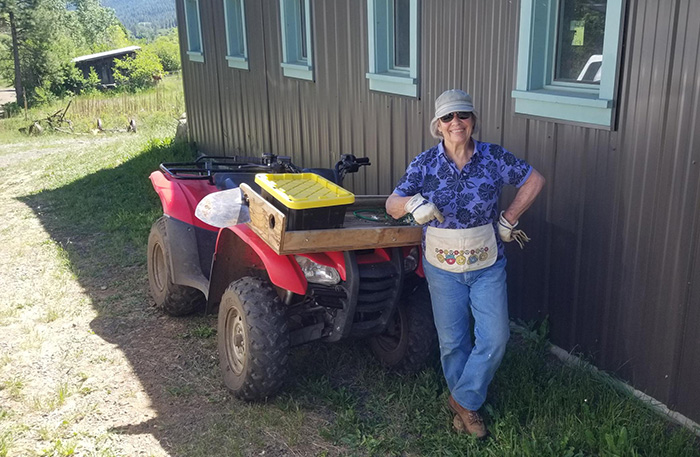
Denis Norlander still uses the nail apron made for her by Frank Acree, a longtime Albuquerque Oasis volunteer, as she works on her farm in Oregon.
After retiring as director in Indianapolis, Mary Dorney leapt into a whirlwind of creative and physical activities.
“I got involved with Storytelling Arts of Indiana. We get together at the library once a month with a moderator and tell stories. I also joined a water aerobics class with a group of senior women, and a watercolor group with a gal who was part of the National Watercolor Society.”
A call to serve
“Then the pandemic kicked in and everything closed, but I was still in touch with the volunteers,” Mary said. For the 25 years that I was with Oasis, they were such wonderful models of life. You saw them at the height of their lives, and you saw them turn their pages as they became caregivers or endured cancer. And when the pandemic came, there they all were. They were calling each other and were so encouraging. We started our own bookstore where we’d go drop books off because the libraries were all closed.”
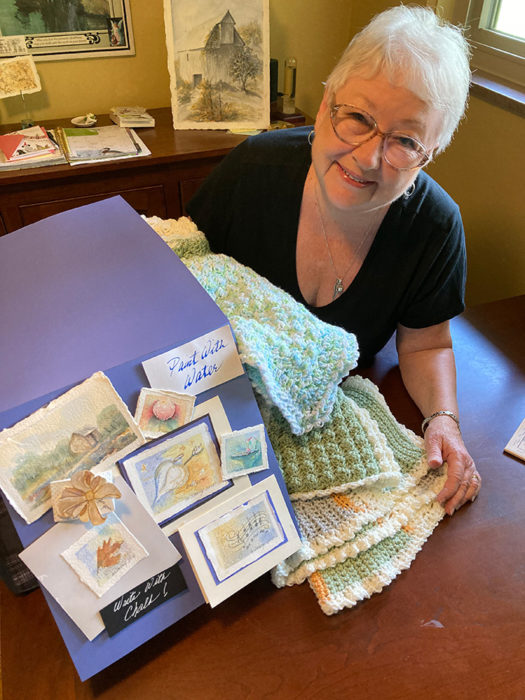
Mary Dorney with some of her watercolor and crochet creations.
Pat Gilbert was the first national manager for the Oasis Intergenerational Tutoring Program and retired in 2016 as network director. A year after her husband died, she showed up for tutor training in St. Charles, Missouri.
“I had spent the year taking care of business and adjusting to life without my husband of 51 years and my job of 24 years, both of which I loved. I also spent time feeling a bit guilty because I wasn’t changing the world. I don’t think I’d have felt that way if I hadn’t worked for Oasis and seen how much people can do in retirement. I needed a purpose. Since then, I’ve tutored six children and loved each experience.”
Karen Safe found purpose as a volunteer at her church after leaving her job as Network director in 2003.
“There was huge division in our church, where things are pretty much run by the members through the church council and committees. I spent two years as moderator of the congregation and got us through it. It was the best thing I’ve done in my life, and it helped me see that you don’t lose value because you’re not getting up for work anymore.”
Jan Clover felt a call to continue supporting Oasis tutoring in her community. After retiring in 2011 as the national tutoring director, she continued to help keep the program going in Jefferson County, Colorado. When the district’s coordinator retired, she and Jan worked with the tutors to set up a steering committee to manage the program.
“I fell in love with the tutors, and they were so committed. I stick with it because it helps the teachers, it’s good for the students, and it is just so meaningful for the tutors. And it’s good for me too.” Jan has taken the Oasis message of lifelong learning and community engagement to heart.
“It’s important to keep your mind open. I finished a series of classes last year on art and architecture and got involved in the local historic preservation society. I’ve been on tours of historic places and art walks around Colorado Springs. I’m also in two book clubs and spearheaded a project with one of them to collect donations for local charities.”
Jeanne Foster succeeded Jan as national tutoring director. After retiring in 2018, she volunteered as an Oasis facilitator for Matter of Balance classes and the Aging Mastery Program which covers subjects like nutrition, fall prevention, physical activity, healthy relationships, sleep, medications, financial fitness, and community engagement.
“I had always threatened to come back as a health volunteer, so why not?” Jeanne said. “The classes gave my week some structure. The Aging Mastery topics are really good. They are things that people should have information about before they retire.”
“I just loved my time at Oasis. It didn’t make me rich but it made me wealthy in many ways,” said Margaret Olds of her 13 years as the director in Akron, Ohio. The center closed in 2007, but Margaret found a way to continue classes at Sumner on Ridgewood, the independent living community where she and other Oasis members live.
“I joined the activities committee to plan programs for the residents. We had a lot of instructors from Oasis who were willing to come and be part of our programming here, like George Gajdos, our Tai Chi instructor. Irma Baker is bringing her Cozy Mysteries series to our community this fall and another outstanding art presenter is coming.”
Taking charge of our health
Margaret is all in for the physical activity classes. “I swim, I do Tai Chi and yoga, and we have an exercise class. As the saying goes, none of us are gonna get out of here alive. But they’ll have to run fast to catch me.”
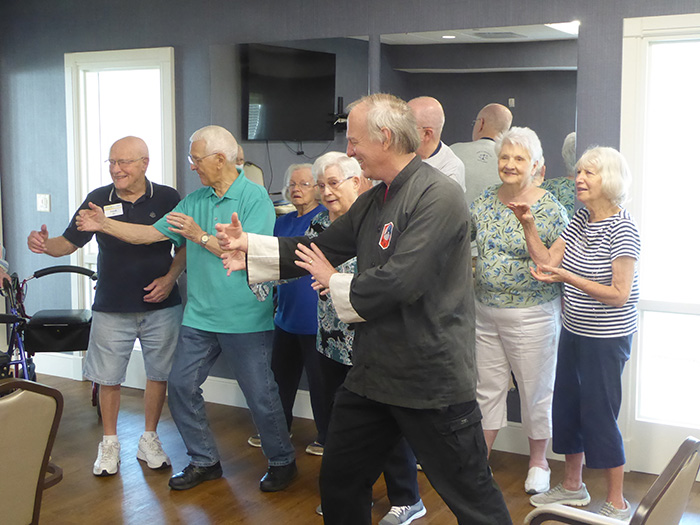
“We have fun and move!” says Margaret Olds of the Tai Chi classes led by longtime Oasis instructor George Gajdos at her senior community. Margaret is the third person from left.
Marcia Kerz retired in 2017 as president of Oasis. She credits her 16 years at Oasis for her approach to a healthy retirement.
“I know that I have to stay active and engaged, do something of value every day and find ways to give back. I wouldn’t have thought quite that way if I’d not been at Oasis. Now I swim a mile three times a week and walk five miles on two or three other days.”
Marcia also serves on the development committee for Metro Theatre Company and as president of the St. Vincent DePaul Society at her church.
After serving as the St. Louis Oasis director in the 1990s, Marsha Clark went on to develop education programs at the University of Missouri and start up a move management business for seniors who were downsizing. An enthusiastic cyclist, Marsha wanted to help more women enjoy the sport. She started up the Women’s Cycling Community in St. Louis, a network where women can find riding partners, arrange group rides, learn cycling and repair skills and share tips. She is proud of the resource it has become for more than 500 women, helping to launch friendships and get more women on bikes.
When I reconnected with Marsha four years ago, she invited me to join the leadership group for the Women’s Cycling Community. It’s been a fun opportunity to do more of what I missed – using skills I developed at Oasis and working with a team to build a community. Lately I’ve been back at Oasis, leading rides for their biking group and planning to teach a class this fall on bicycle touring.
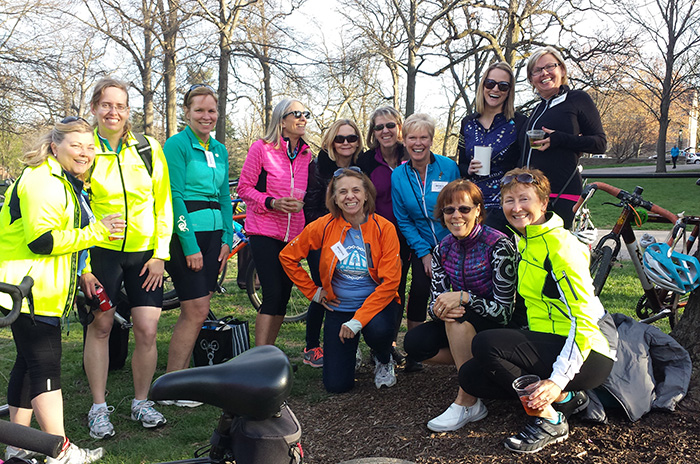
Marsha Clark, kneeling in the center, with some of the people in the Women’s Cycling Community.
Marylen Mann, the founder of Oasis, has said to me many times, “No one ever really leaves Oasis.” I’ve heard that as both a promise and a challenge, and as my fellow alumni have recounted their stories of retirement, as a gift. Whether we are engaged as volunteers with Oasis or other organizations or finding new ways to challenge our minds and our bodies, the experience has become part of our approach to life, and it gives us a sense of endless possibility.
“I always think that each day is the most wonderful day of my life,” said Mary Dorney. “I’ve got a clean slate and I can write anything I want on it.”
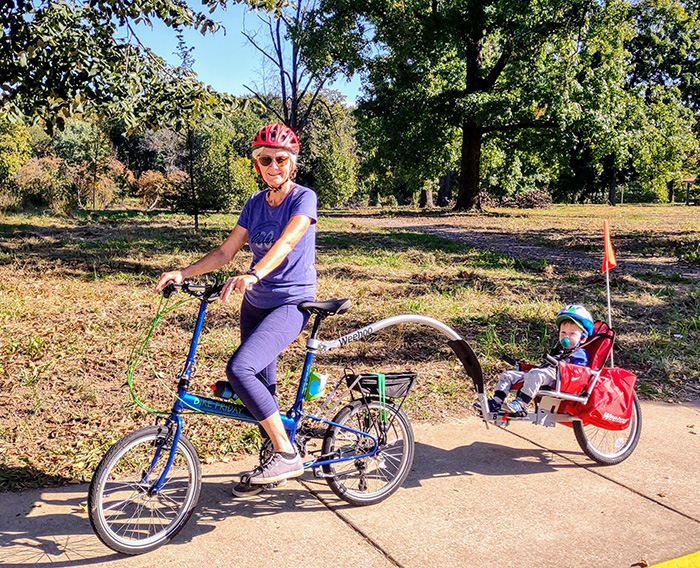
Janice Branham, above with her youngest biking buddy, retired in 2018 from her job as director of communications and technology at the Oasis Institute.

